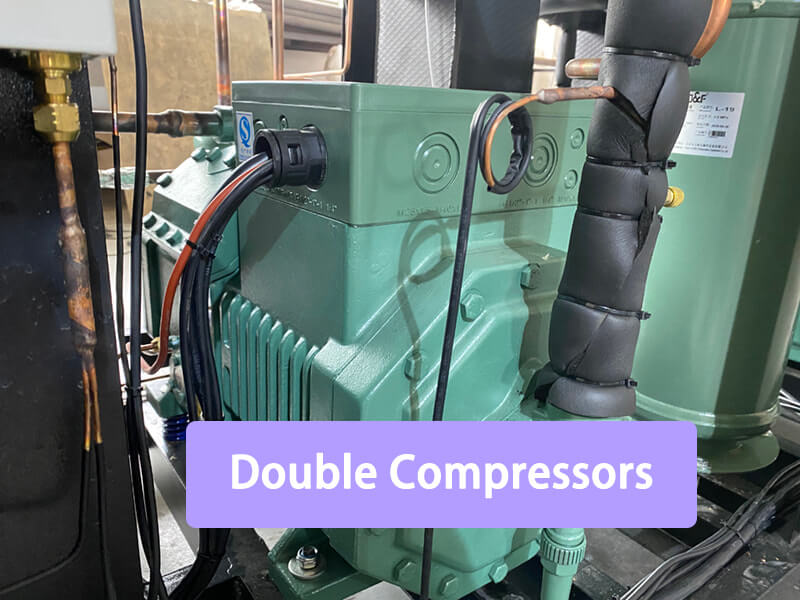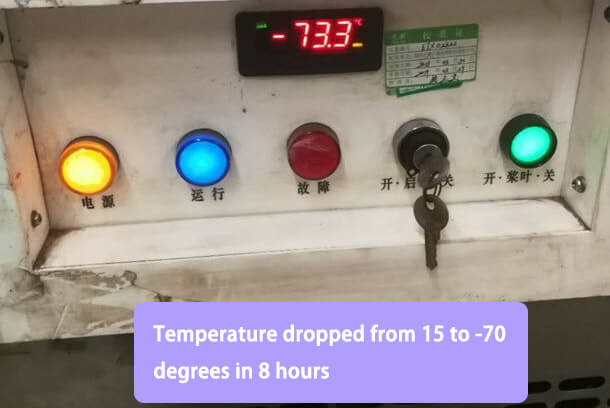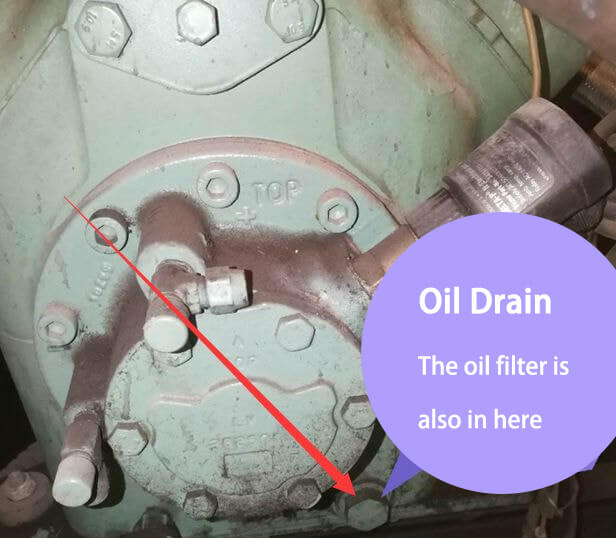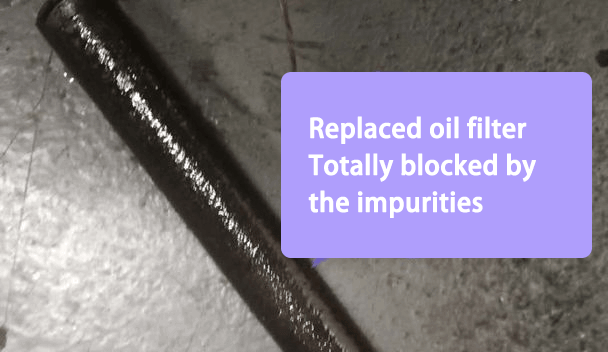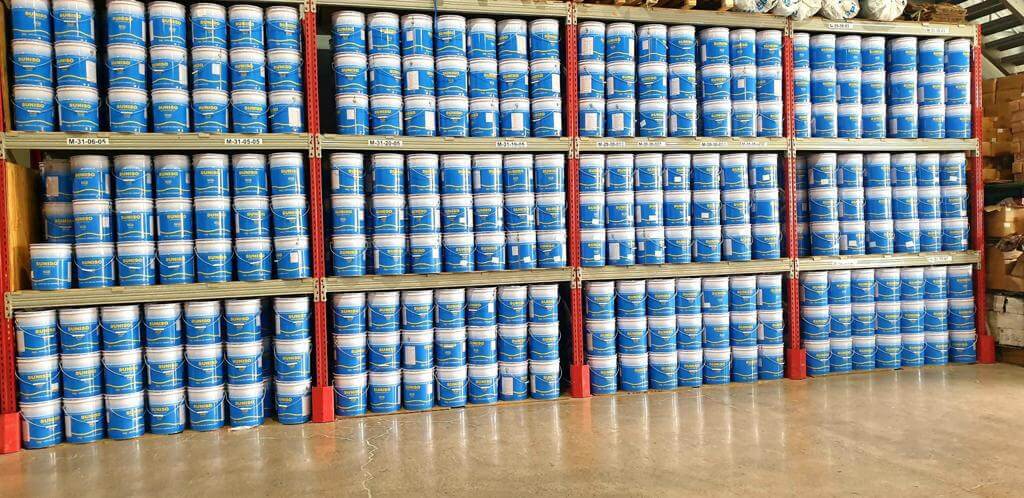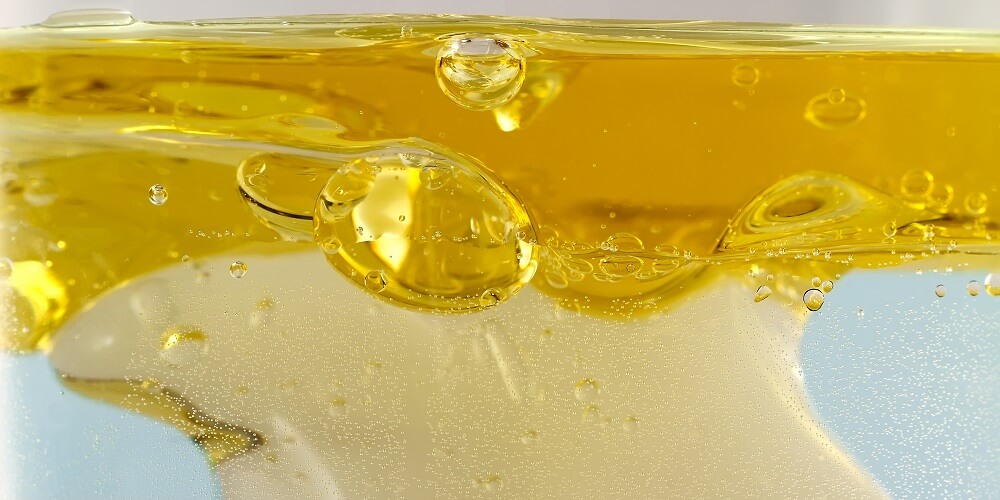Based on the unscheduled shutdown fault, we exclude the problem of differential oil pressure itself. So we assume the cause of the fault is that the oil filter is too dirty, which blocks the compressor.
Close the compressor high and low pressure valves and oil return valve, directly drain the compressor refrigerant, remove the oil drain bolt to drain the oil. Shoot out the refrigeration oil color is very black, the filter is also blocked.
Then we cleaned the filter and put the it back into the chiller. The machine was refilled with refrigerant and the chiller functioned normally for about 2 hours. The next day, when we returned to the site, the unit had cooled down to minus 73 degrees, and the problem was solved smoothly!
The next day suddenly received a call that reported another fault shutdown. We returned to the customer checked. We find that the chiller’s main refrigeration system pressure is normal, the secondary refrigeration system has only 2 kg pressure. When we restart the machine, the high pressure rose to 5 kg and stopped, the low pressure is slowly decreasing instead. In a minute or so, the low pressure decreases to negative pressure and reports a fault shutdown.
We recharged the refrigerant and tested the machine, and found that the high pressure still did not rise. After stopping the charge, the low pressure of the chiller quickly dropped to negative pressure. So, we judged that the refrigeration system of the unit was blocked. After draining the refrigerant and removing the filter, we found that the filter was indeed blocked. At this point we were curious, since the filter was clogged, why the machine could still cool normally for so long?
We replaced the filter and filled the refrigerant, and after the machine restarted, it was reported to be down again. At this point we can only assume that the failure point is the throttle.
So we discharged the refrigerant, found the capillary tube. After pressurizing it we found that all capillary tubes were open. Several minutes later, we pressed the evaporator from the low pressure end of the compressor (the capillary tube connected to the evaporator was a 16 mm diameter copper tube), we found that the 16mm copper tube is blocked. We are confused totally, why would this happen, and what may cause this problem, we asked again.
The evaporator is definitely blocked, but how to block such a thick copper tube, and what is the blockage? 4mm capillary tube is not blocked, 6mm manifold will be blocked? We can not figure out how!
We continued to pressurize to 12 kg and the evaporator was still clogged. After trying for more than an hour, suddenly a large amount of oil spewed out from the 16mm copper tube (at the capillary inlet), along with ice sludge. Now we can confirm that the cause of the failure is oil blockage.
Common Faults Lead by Poor Quality Refrigeration Oil
Refrigeration oil viscosity
Refrigeration oil works at both high and low temperatures, if the viscosity of the oil is not enough, it will lead to increased wear of the compressor bearings and cylinder, high noise problems while reducing the effectiveness of refrigeration, and shorten the service life of the compressor, and even in extreme cases may cause us to say “burn”. This is how the compressor is so slowly killed.

Pour point
The pour point of refrigeration oil: like what I said earlier, the working temperature of the compressor varies widely, so in order to ensure the role of the lubricant can be played normally, it is generally required to maintain good fluidity at low temperature. So the pour point should be generally lower than the freezing temperature, and the viscosity temperature characteristic should also be good, so as to ensure that the freezing oil can return to the compressor from the evaporator smoothly in the low temperature environment. If the pour point of the refrigeration oil is too high, it will lead to the return of oil too slow, the compressor then would be easily burned.
Flash point
If the flash point of refrigeration oil is too low, it will also bring danger. As the general refrigeration oil volatility is relatively large, the flash point is too low will make the refrigeration cycle of oil volume increased.
Not to mention the increased cost, more serious is that the process of compression heating will increase the possibility of combustion hazards. So the flash point of refrigeration oil is required to be more than 30 degrees higher than the refrigeration exhaust temperature.

Chemical stability
High-quality refrigeration oil is chemically stable, does not oxidize and will not corrode metals. If the poor quality refrigeration oil contains refrigerant or water, it will produce corrosive effect, and the lubricant will generate acid after oxidation and corrode the metal. When the refrigeration oil is at high temperature, coke and dirt powder will appear, if this material enters the filter and throttle valve, it will be easily blocked. If it enters the compressor, it may penetrate the motor insulation film, and then it is likely to burn the compressor.
Mechanical impurities and water content exceeds the standard
If the refrigeration oil contains water, it will intensify the chemical change of the oil, make the oil deteriorate and cause the corrosion effect on the metal, and also cause the ice blockage at the throttle valve or expansion valve. And the lubricant oil contains mechanical impurities, will intensify the friction surface wear of the moving parts, causing damage to the compressor.
High Paraffin Content
When the working temperature of the compressor decreases to a certain value, paraffin wax starts to precipitate in the refrigerant oil, making the oil cloudy. Paraffin wax precipitates out of the refrigeration oil and accumulates at the throttle valve, making the throttle valve blocked, or may accumulate on the heat transfer surface of the evaporator, affecting the heat transfer performance.

